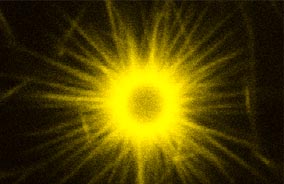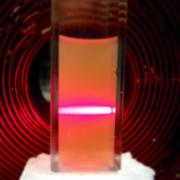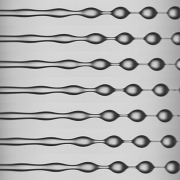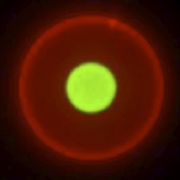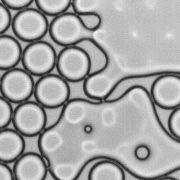|
The actin cytoskeleton is a complex and dynamic network of proteic filaments. By polymerizing against the cell membrane, it generates a force allowing the cell to move forward. In order to elucidate the physical origin of this phenomenon, we study the reaction of a population of growing actin filaments when a force is applied on it with superparamagnetic beads. We are able to probe the physical mechanism of force generation, along with the influence of the filaments’ geometry on this mechanism.
|


